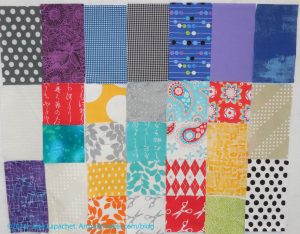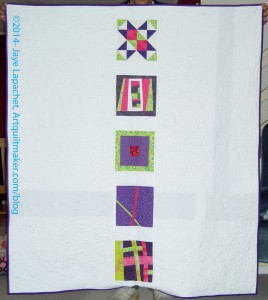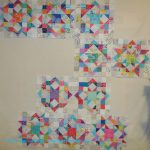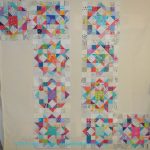An American retired professional wrestler, fitness instructor, motivational speaker and actor.
diamond in the rough
girl’s best friend
Hope Diamond
drill bit
Definition: “In mineralogy, diamond ( or ; from the ancient Greek ?????? – adámas “unbreakable”) is a metastable allotrope of carbon, where the carbon atoms are arranged in a variation of the face-centered cubic crystal structure called a diamond lattice. Diamond is less stable than graphite, but the conversion rate from diamond to graphite is negligible at standard conditions. Diamond is renowned as a material with superlative physical qualities, most of which originate from the strong covalent bonding between its atoms. In particular, diamond has the highest hardness and thermal conductivity of any bulk material. Those properties determine the major industrial application of diamond in cutting and polishing tools and the scientific applications in diamond knives and diamond anvil cells.
Because of its extremely rigid lattice, it can be contaminated by very few types of impurities, such as boron and nitrogen. Small amounts of defects or impurities (about one per million of lattice atoms) color diamond blue (boron), yellow (nitrogen), brown (lattice defects), green (radiation exposure), purple, pink, orange or red. Diamond also has relatively high optical dispersion (ability to disperse light of different colors).
Most natural diamonds are formed at high temperature and pressure at depths of 140 to 190 kilometers (87 to 118 mi) in the Earth’s mantle. Carbon-containing minerals provide the carbon source, and the growth occurs over periods from 1 billion to 3.3 billion years (25% to 75% of the age of the Earth). Diamonds are brought close to the Earth’s surface through deep volcanic eruptions by a magma, which cools into igneous rocks known as kimberlites and lamproites. Diamonds can also be produced synthetically in a HPHT method which approximately simulates the conditions in the Earth’s mantle. An alternative, and completely different growth technique is chemical vapor deposition (CVD). Several non-diamond materials, which include cubic zirconia and silicon carbide and are often called diamond simulants, resemble diamond in appearance and many properties. Special gemological techniques have been developed to distinguish natural, synthetic diamonds and diamond simulants.” (Wikipedia)
Diamond offers a complete multimedia solution featuring AMD Radeon graphics cards, TV tuners, USB display adapters, video capture devices, sound cards, modems, etc
The term diamond is another word for a rhombus. The term is also used to denote a square tilted at a angle.
The conditions for diamond formation to happen in the lithospheric mantle occur at considerable depth corresponding to the aforementioned requirements of temperature and pressure.
Diamond is a resource from vanilla Minecraft. It is found underground on layers 1-16 as Diamond Ore, as well as in chests in dungeons or abandoned mineshafts. As rare and precious items, diamonds are used for many middle-to endgame items.
Neil Diamond
solitaire
Diamond Pistols
The Diamond Empire
blood diamonds
Simon Diamond was inducted in 1995; PCW (Pennsylvania Champion Wrestling) United States title winning a Steel Cage Battle Royal (December 27, 1996)
diamond mining
Diamond Age by Neal Stephenson
Diamond no Ace
HTC Touch Diamond2
Diamond City is a city appearing in the WarioWare series. Wario claims that it is “his city” that he has made into a “sparkling gem of a metropolis.” Here, Wario and his friends have parties, and most of them reside here. It isn’t clearly known where Diamond City is located.
Diamond Resorts International
Diamond Naturals dog food
A song recorded by Barbadian singer Rihanna for her seventh studio album, Unapologetic.
A fictional character, a superhero that appears in the NEW-GEN comic books
Diamond grape – A white grape which is a cross between the Concord and Iona grapes.
Definition: “A diamond (from the ancient Greek ?????? – adámas, meaning “unbreakable”, “proper”, or “unalterable”) is one of the best-known and most sought-after gemstones. Diamonds have been known to mankind and used as decorative items since ancient times; some of the earliest references can be traced to India.
The hardness of diamond and its high dispersion of light – giving the diamond its characteristic “fire” – make it useful for industrial applications and desirable as jewelry. Diamonds are such a highly traded commodity that multiple organizations have been created for grading and certifying them based on the four Cs, which are color, cut, clarity, and carat. Other characteristics, such as presence or lack of fluorescence, also affect the desirability and thus the value of a diamond used for jewelry.
Perhaps the most famous use of the diamond in jewelry is in engagement rings, which became popular in the early to mid 20th century due to an advertising campaign by the De Beers company, though diamond rings have been used to symbolize engagements since at least the 15th century. The diamond’s high value has also been the driving force behind dictators and revolutionary entities, especially in Africa, using slave and child labor to mine blood diamonds to fund conflicts. Though popularly believed to derive its value from its rarity, today, annual global rough diamond production is estimated to be about 130 million carats (26 tonnes),[1]” (Wikipedia)
Post the direct URL (link) where your drawing, doodle, artwork is posted (e.g. your blog, Flickr) in the comments area of this post. I would really like to keep all the artwork together and provide a way for others to see your work and get familiar with your blog or website.
The Creative Prompt Project, also, has a Flickr group, which you can join to post your responses. I created this spot so those of you without blogs and websites would have a place to post your responses.
We are also talking about this on Twitter and Instagram. Use the hashtag #CPP


























